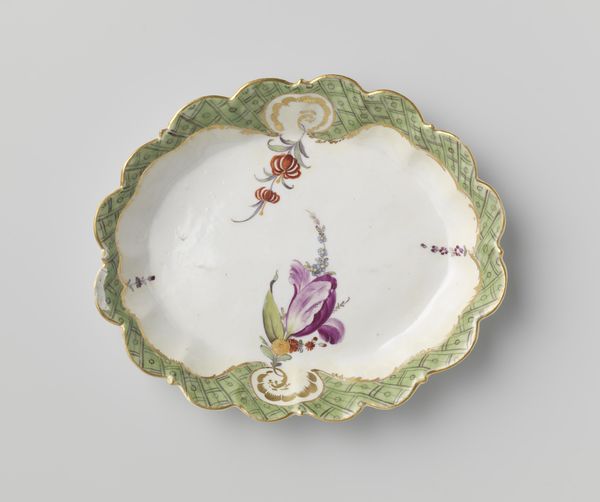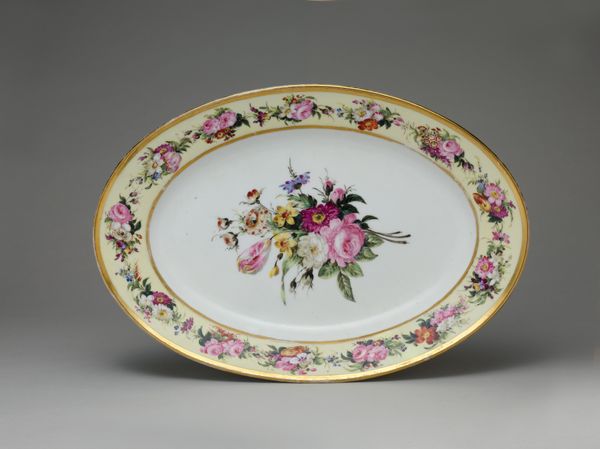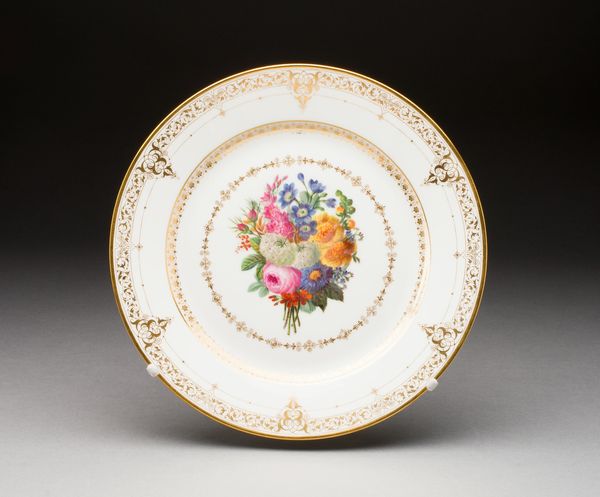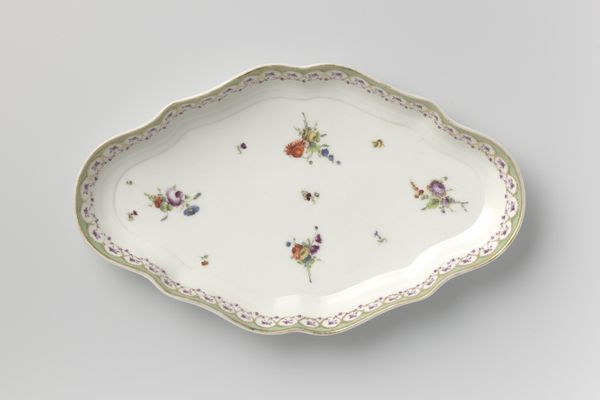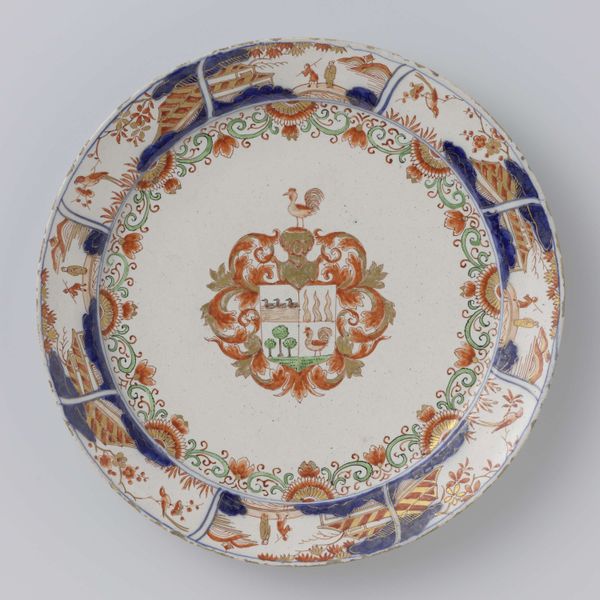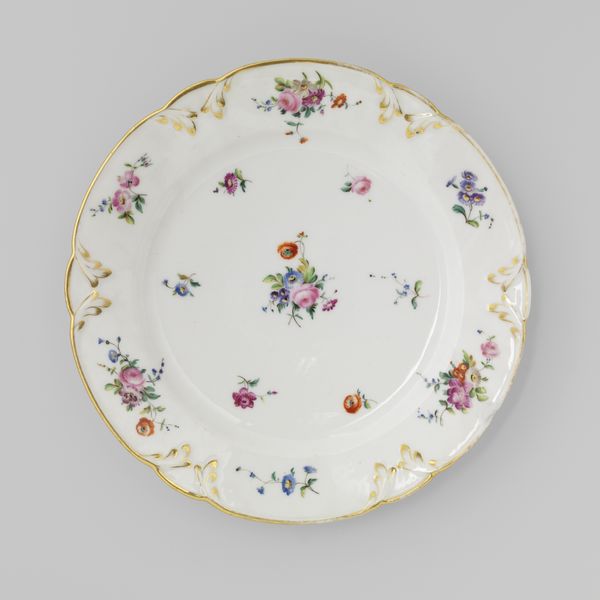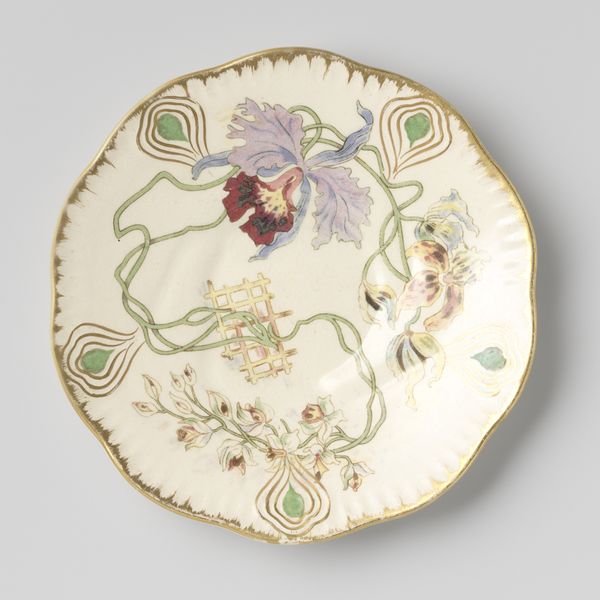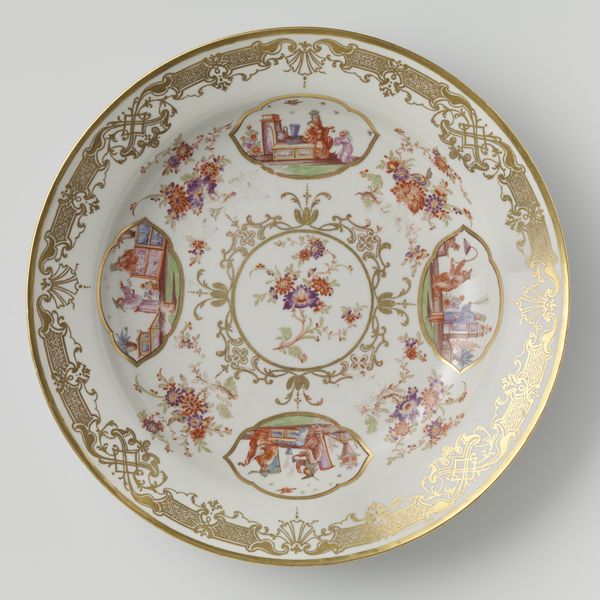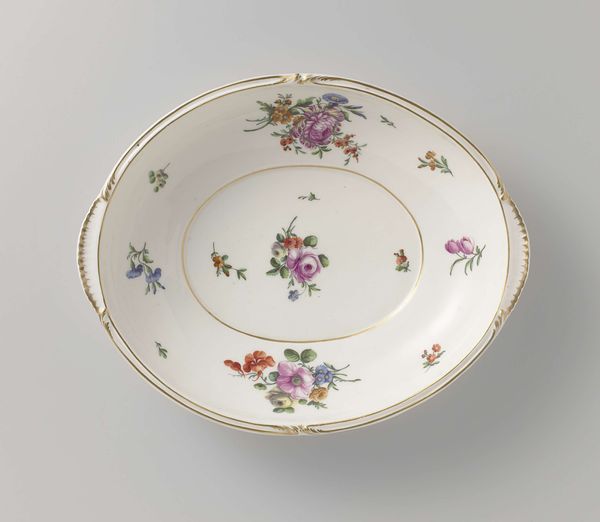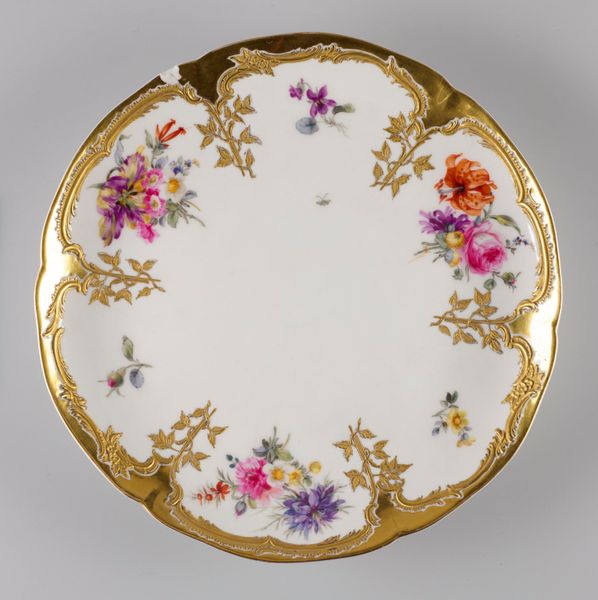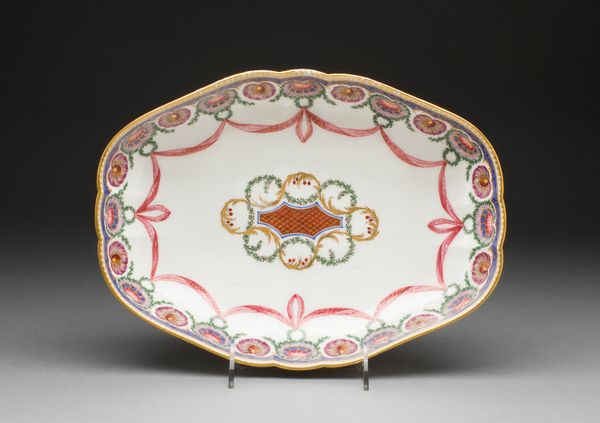
painting, ceramic, guilding, porcelain, earthenware, enamel
#
decorative element
#
pottery
#
painting
#
ceramic
#
guilding
#
porcelain
#
earthenware
#
enamel
#
ceramic
#
decorative-art
#
miniature
#
rococo
Dimensions: height 3.6 cm, length 20.8 cm, width 16.4 cm, length 14 cm, width 11.3 cm
Copyright: Rijks Museum: Open Domain
This oval saucer dish, bearing the arms of the Van der Parra family, was likely made by an anonymous artist working with porcelain. Porcelain itself tells a global story, involving the extraction of clay, its refinement and shaping, and of course, the skilled application of pigments and glaze, all followed by careful firing. Think for a moment about the techniques and traditions involved. This dish is both robust and delicate. The smooth surface, the precisely painted details like the family crest, the crown, the floral motifs, and the decorative rim - all speak to a high level of skill and division of labor. These porcelain painters were masters of their material, able to create both subtle blends and sharp contrasts. The social context is equally important. The Van der Parra family's commissioning of this piece signifies wealth and status. Porcelain, once a luxury only afforded by royalty, became a symbol of bourgeois aspiration. This dish then is not just a functional object, but a statement about identity, class, and participation in a global economy of taste. So, next time you encounter porcelain, consider the story of skill, labor, and social meaning embedded in its making.
Comments
No comments
Be the first to comment and join the conversation on the ultimate creative platform.

